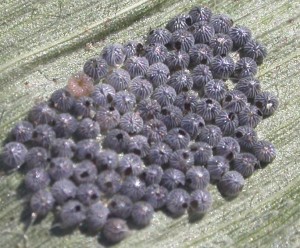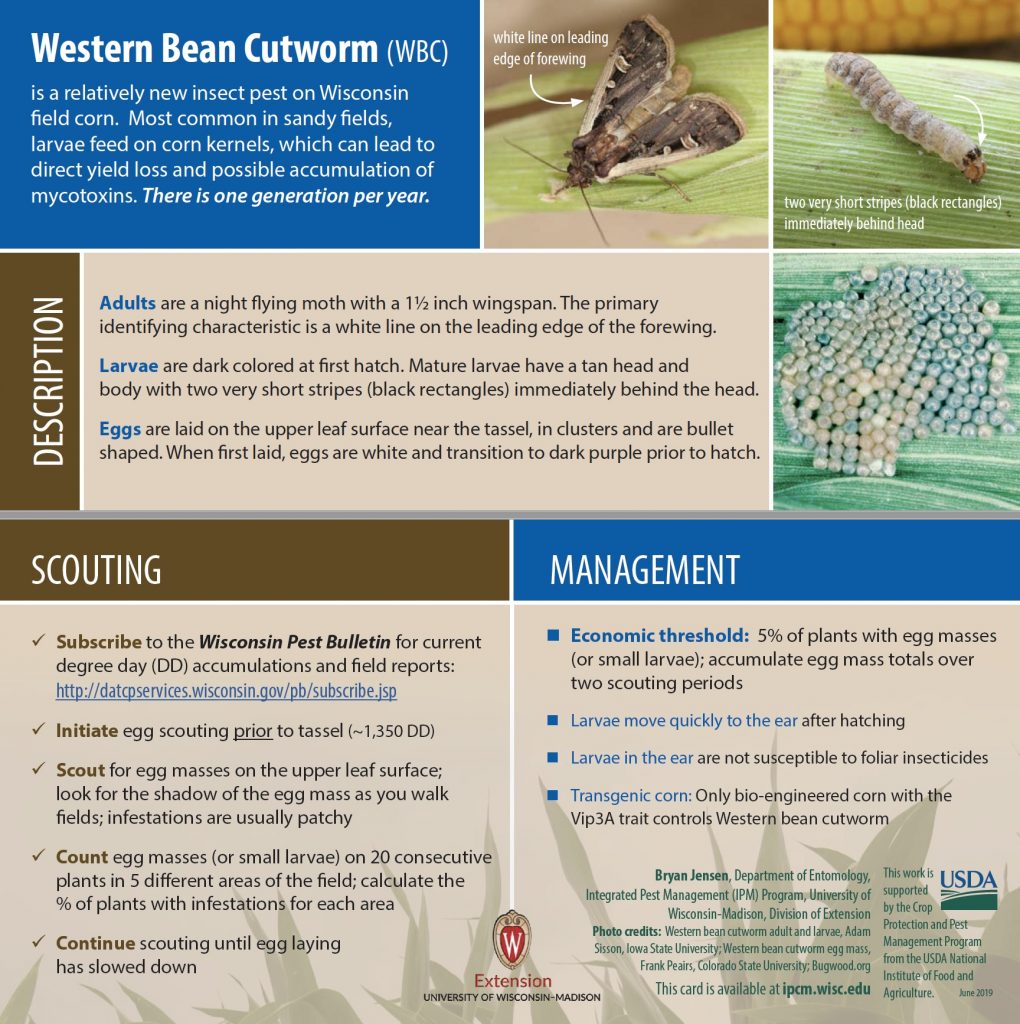Bryan Jensen, UW-Madison Dept. of Entomology and Integrated Pest Management Program
The western bean cutworm flight has begun in southern Wisconsin. Although not a widespread insect with consistent economic loss, it is a potential problem in some areas of the state. DATCP staff will be monitoring the flight and reports will be issued in the Wisconsin Pest Bulletin.
In a nutshell, after adult emergence, they mate, and the female will lay eggs in clusters usually on the upper leaves of corn plants. Although all stages of corn are attractive for egg laying, pre-tassel corn is probably the most attractive crop stage. In silking corn, those egg masses may be closer to the ear. Egg masses will be light colored and progress through a tan stage before turning purple just prior to hatching. Oviposition may last for several weeks.
Pheromone traps are a good method to document adult emergence, however, they do not predict risk of injury within a field. Scouting for egg masses is the best predictor of damage. Egg laying can be clumped within a field. A minimum of 20 consecutive plants in 5 areas of a field should be monitored for eggs at intervals of 5-7 days. If corn is pollinating or silking during scouting also inspect the tassel and silk for early instar larvae. Include these plants as infested. In the Midwest, a lower threshold of 5% infested plants (eggs + larvae) has been adopted to account for the risk of ear molds.
Foliar insecticides are not recommended until after ear has started to form. Insecticides will not control eggs or will they kill larvae once in the ear. Therefore, timing of an application can help improve control and reduce the chance for a second application.
Control of western bean cutworm using bioengineered corn is limited. Currently only the Vip3A will provide adequate control. Other Bt traits originally developed for European corn borer will not provide effective control of western bean cutworm.
We have developed a Western Bean Cutworm card for background information including pictures and text.

(Photo: E. Cullen, Univ. of Wisconsin-Madison)
